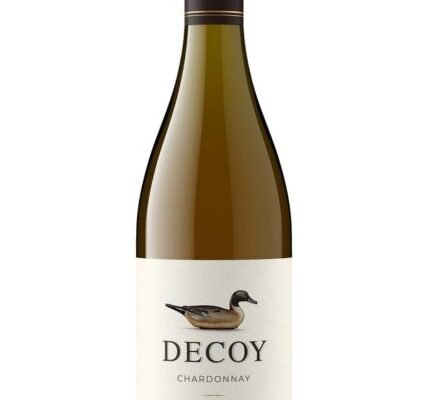
Chardonnay is one of the most recognized and widely consumed white wines in the world. Its versatility and unique characteristics have made it a favorite among wine enthusiasts and casual drinkers alike. From its origins in France to its global reach today, Chardonnay offers a fascinating exploration of flavor profiles, food pairings, and winemaking techniques.
Origins and History
chardonnay wine traces its roots back to the Burgundy region of France, where it is believed to have originated from a cross between the Pinot Noir and Gouais Blanc grapes. The name “Chardonnay” is derived from the village of Chardonnay in the Mâconnais region of Burgundy. It first gained prominence in the 12th century and quickly became a staple in Burgundy’s wine production.
As winemaking techniques evolved, so did Chardonnay. Its adaptability to different climates and soils allowed it to flourish beyond France. By the late 20th century, Chardonnay had become a key player in the global wine market, thriving in regions such as California, Australia, and South America.
Characteristics and Flavor Profiles
One of the defining features of Chardonnay is its remarkable versatility. Depending on the climate and winemaking methods, Chardonnay can exhibit a wide range of flavors and aromas.
- Cool Climate Chardonnay: In regions like Chablis (France) and parts of Oregon, Chardonnay tends to have higher acidity and more mineral-driven profiles. Flavors often include green apple, pear, citrus, and flint, with a crisp, refreshing finish.
- Warm Climate Chardonnay: In warmer regions such as California and Australia, Chardonnay develops richer, more tropical flavors. Expect notes of ripe peach, pineapple, and mango, often complemented by buttery, creamy textures from malolactic fermentation.
- Oak Aging: Many chardonnay wine are aged in oak barrels, which imparts additional flavors of vanilla, toast, and spice. The level of oak influence can vary significantly, with some winemakers opting for minimal oak to preserve the fruit character, while others embrace a bold, buttery style.
Winemaking Techniques
Chardonnay’s adaptability extends to various winemaking techniques that can significantly alter its final profile:
- Malolactic Fermentation: This process converts the sharp malic acid in the wine into softer lactic acid, resulting in a creamier mouthfeel and buttery flavors. This technique is common in many New World Chardonnays.
- Lees Aging: Allowing the wine to age on its lees (the dead yeast cells left after fermentation) can enhance texture and complexity. This practice contributes to a richer mouthfeel and can introduce flavors reminiscent of bread and brioche.
- Temperature Control: The temperature at which Chardonnay is fermented can impact its aromatic profile. Cooler fermentation tends to retain more fruit character, while warmer fermentation can enhance the wine’s richness.
Notable Regions
While Chardonnay is grown in many parts of the world, several regions are particularly renowned for their exceptional expressions of this grape:
- Burgundy, France: The heartland of Chardonnay, Burgundy is home to some of the most prestigious Chardonnays, including those from Chablis, Meursault, and Puligny-Montrachet. Burgundy Chardonnays are often characterized by their elegance, minerality, and complexity.
- California, USA: California has emerged as a powerhouse for Chardonnay, particularly in regions like Napa Valley and Sonoma County. Here, winemakers produce a wide array of styles, from oaky and buttery to lean and crisp.
- Australia: Regions such as Margaret River and Adelaide Hills have gained recognition for their exceptional Chardonnays. Australian Chardonnays often showcase bright fruit flavors balanced by crisp acidity.
- New Zealand: With its cool climate, New Zealand produces Chardonnays that often emphasize purity and freshness. The Marlborough and Hawke’s Bay regions are particularly noted for their vibrant, fruit-forward styles.
Food Pairing
Chardonnay’s diverse flavor profile makes it a fantastic companion for a wide variety of dishes. Here are some classic pairings:
- Seafood: Chardonnays, especially those with bright acidity, pair beautifully with seafood dishes like grilled fish, shellfish, and sushi. The wine’s acidity cuts through the richness of the fish, enhancing the overall experience.
- Poultry: Whether roasted chicken or creamy pasta, Chardonnay complements poultry dishes well. The wine’s body and flavors can match the richness of creamy sauces or herbs used in cooking.
- Cheese: Soft cheeses such as Brie and Camembert pair well with the buttery notes in oaked Chardonnay, while tangy cheeses like goat cheese find a harmonious balance with cooler climate styles.
Conclusion
Chardonnay’s journey from a humble French grape to a global phenomenon is a testament to its adaptability and appeal. With its diverse range of flavors, styles, and aromas, it’s no wonder that Chardonnay remains a favorite among wine lovers. Whether you prefer the crisp, mineral-driven Chardonnays of Chablis or the rich, buttery expressions from California, there’s a Chardonnay for every palate.
As you explore the world of Chardonnay, take the time to appreciate the nuances of each bottle. The next time you pour a glass, consider the terroir, winemaking techniques, and food pairings that can enhance your experience. Cheers to discovering the delightful complexities of this beloved grape!











